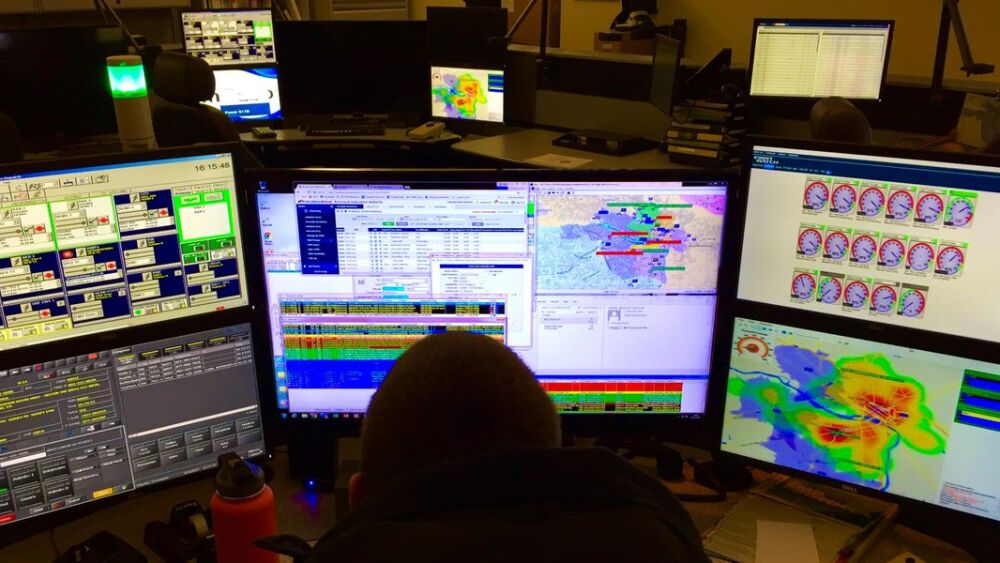America’s 911 emergency communications centers are at a crossroads, facing relentless pressure from staff burnout, rising system outages and new cyber threats, according to the 2025 Pulse of 9-1-1 report. But as the challenges mount, a growing number of center leaders see technology, especially artificial intelligence, as a critical path forward.
The annual survey, released June 23 by Carbyne and NENA: The 9-1-1 Association, paints a picture of an industry at a turning point, grappling with critical vulnerabilities even as some areas show signs of progress.
| RELATED: Can AI fix 911’s biggest problems — or make them worse?
Burnout overtakes staffing as top concern
While hiring woes have eased slightly — 74% of centers now report open positions, down from 82% last year — burnout has overtaken recruitment as the number one challenge for the 9-1-1 workforce. High turnover, chronic absenteeism and a 22% failure rate among new trainees are straining already thin ranks. Nearly 70% of telecommunicators surveyed said they experience stress before every shift, and “reduced performance and productivity” has become the most commonly reported symptom in the past six months.
“What these professionals are experiencing isn’t just stress — it’s systemic fatigue,” said Brian Fontes, CEO of NENA, in a statement. “This year’s findings are a wake-up call: Real investments are needed to ensure 9-1-1 professionals are supported, protected, and equipped to better serve their communities and care for themselves in these high-stress roles.”
The report finds that stressful job demands and rigid schedules are the main reasons new hires drop out of training, with over half of new employees at some centers failing to complete probation. Agencies are responding with new approaches like modular, scenario-based and even virtual reality training, but the gap remains.
System outages and cyber threats increasing
Technology failures are surging, with 88% of emergency communication centers reporting at least one outage in the past year, up from 75% the year before, the report states. Nine percent experienced a telephony denial-of-service or other cyberattack, a threat that barely registered just a year ago. Despite these risks, many centers are still operating on outdated systems not designed for today’s needs, let alone tomorrow’s.
“There’s no pause button in 911. No reroute. No off switch,” the report notes. Respondents identified system outages, high non-emergency call volume and lack of accurate caller location as their top operational pain points.
AI and technology: From theory to necessity
If there’s a bright spot, it’s in the sector’s shifting attitude toward AI and tech innovation. Eighty-six percent of respondents said they are at least somewhat comfortable with the idea of AI assisting in call taking. Language translation and automated triage topped the list of AI priorities, with real-time transcription and better location mapping not far behind.
Leaders believe technology can ease staffing shortages. More than three-quarters said tech could make it easier to manage workforce gaps, particularly by automating non-emergency call screening and reducing manual workload. Yet implementation lags: 79% of centers still have emergency and non-emergency calls handled by the same staff, and only 4% use automated screening tools.
“AI won’t replace dispatchers. It will give them a fighting chance in high-pressure environments,” Carbyne CEO Amir Elichai said. The report predicts a near-future where AI-driven triage and language tools lower the skill threshold for new hires and help shorten training cycles. Agencies are also watching metrics like voluntary turnover rate and “mandatory OT hours per FTE” as indicators of how well these new strategies work.
Wellness programs and training adaptations show promise
The survey also points to an increase in the use of wellness resources. The number of centers using employer mental health services rose from 44% to 53%, and adoption of stress-management apps is also up. Nearly 40% of emergency communications centers launched new wellness initiatives in the past year.
However, training remains a pain point, with more than one in five new hires failing to complete the onboarding process. To address this, more agencies are turning to modular learning and scenario-based simulations.
“The professionals behind every emergency call are showing remarkable resilience,” Fontes said. “But that extraordinary resilience must be matched with extraordinary support from their employers and their communities.”
What’s next: AI adoption, cloud migration and retention-first strategies
The Pulse of 9-1-1 report offers a roadmap for the future:
- AI from pilot to practice: Expect language translation, transcription, and automated triage to move quickly from testing to routine use.
- Cyber-resilient cloud migration: Dual or multi-cloud call handling is predicted to become standard, along with better DDoS/TDoS protections.
- Retention-first workforce strategies: Agencies are likely to invest in retention stipends, structured wellness time, and new staffing models—including remote and on-demand positions for non-emergency queues.
- Immersive training: Modular, simulation-based, and VR/AR platforms are expected to replace lengthy classroom blocks for onboarding new hires.
As one survey participant put it: “There is no pause button in 911. We need to equip our teams to answer the call — every time.”
The full 2025 Pulse of 9-1-1 report, based on responses from 1,379 public safety professionals nationwide, is available here.







